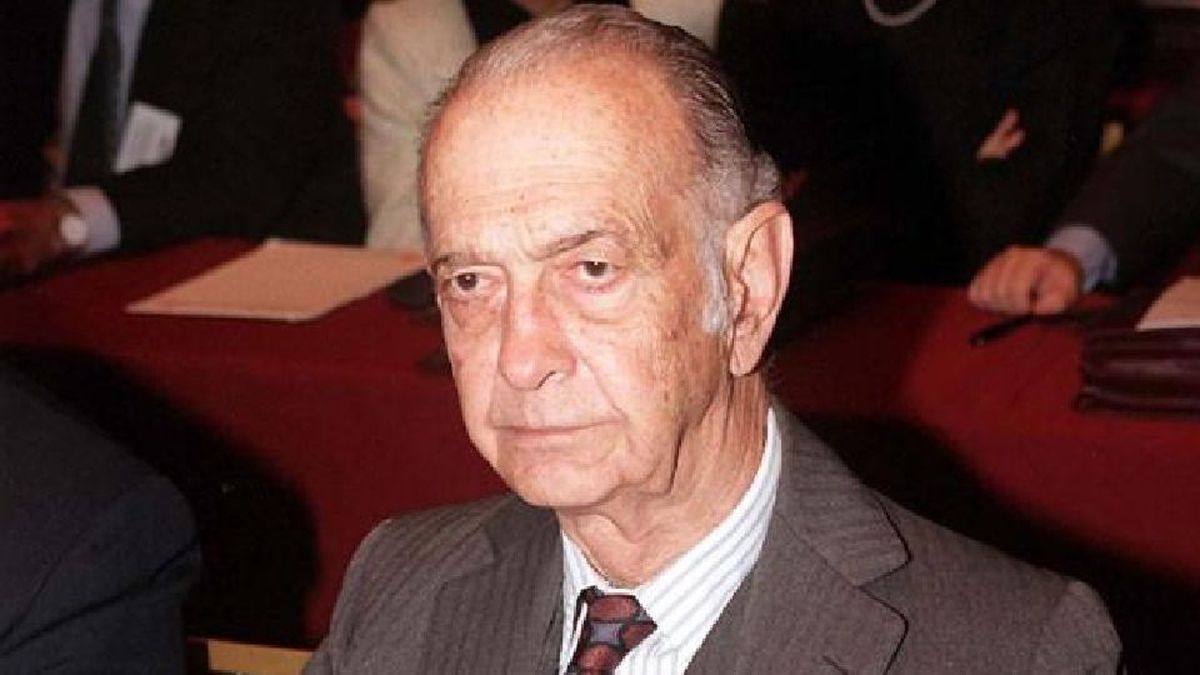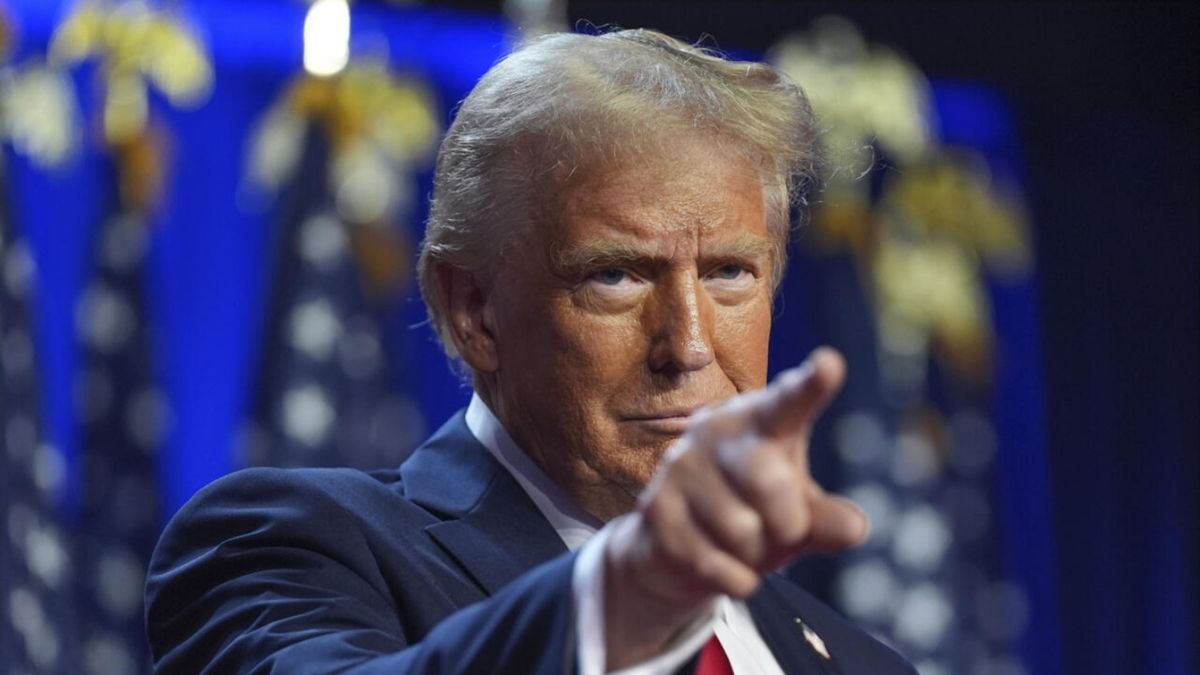Food and drinks are essential goods. Nobody wants prices by decree. We know that it is also “Bread for today and hunger for tomorrow”. However it is preferable “Bread for today and hunger for tomorrow, than” hunger for today and bread for tomorrow “. In a global environment BANI (acronym in English) Brittle (brittle), Anxious (anxious), Nonlinear (nonlinear), and Incomprehensible (incomprehensible), the passage applies: “Therefore, do not worry about the day in the morning; because the daytomorrow he will take care of himself. Give every day your own problems “ (Saint Matthew ch. 6 verse 34) ESV version.
The critical heterodoxy of Martín Guzmán
While economist deputies are angry with those who assert doubts that inflation is an exclusively monetary phenomenon, although recently the IMF has stated that inflation is a multi-causal phenomenon, they simplify: an increase in the monetary issue of “N percentage points” it requires a fall in the velocity of money circulation of n%, or an increase in the demand for money, so that the inflation rate does not accelerate. These neo-quantivists affirm that if the fiscal situation deteriorates and the BCRA issues money, inflation accelerates. And that may lead one day, but the answer to the cross-question is always unfinished. When and how much?
For them, the real demand for money can increase or, in other words, the speed of money circulation can decrease. The level of inflation then depends on the behavior of the demand for money. If we expand more, people have to crave to have more money, or stay longer with what they receive. So the problem is not the magnitude of the financing needs of the public sector -as they repeat-, but the dependence on the monetary issue. The relevant thing would be to take a look at the total financing needs of the public sector, not at public spending -which is a political issue-. We must also bear in mind that since January 2018 no one has lent us a dollar, except the IMF and local banks with excesses.
If we want to talk about the economy, let’s talk about a deficit or a surplus. When we talk about raising or lowering public spending or taxes, we are talking about politics, not economics. And, politics decides how it is spent and collected.
The experience of December 2013 / January 2014 showed that a jump in the price level cannot be explained simply by direct issuance. Prices do not depend, in the short term, on the issue. There was not enough issuance to explain such an inflationary jump in the summer (2013/2014). On the contrary, the monetary base contracted $ 11,500 million. As always, the explanation was: “later”. There is probably a non-perfect relationship between issuance and inflation in the long term, although it can fail as in the US and from 2008 to 2021, with extravagant rounds of quantitative easing (monetary laxity).
For the Keynesian school, increases in aggregate demand only produce inflation when the factors are being used to the maximum. Today 18 points are missing to close the out put gap (production gap). Inflation is not conceivable if unemployment is high and today it is. And, if tax incentives drive investment, this is good even with inflation, because it will increase installed capacity.
The ECLAC structuralist school defines two mechanisms by which the increase in the general price level arises: 1) basic pressures and 2) propagation mechanisms. The former arise from dependence on the external sector. The chronic need for imported inputs and parts, and not managing the prices of those imports. Changes in international prices have an impact on prices in the domestic economy. Faced with an external price shock (today the global inflation forecast is quadrupled, compared to the last quarter of 2020), as mentioned, the prices of the internal economy rise, and begin to spread. The propagation mechanisms have to do with the bidding between the actors in the economy and the power of each sector to impose its will on that of the rest. Eg: unions, corporations and the State.
In the seventies Robert Gordon He proposed that policymakers focus on an inflation measure that excludes food and energy in the US, a rough cut to the distinction between inertial and non-inertial prices. Remember, that was a time of wild swings in oil prices and food prices were also much less stable. Gordon’s suggestion was so helpful that the “Core inflation”, defined by the exclusion of food and energy, became a standard measure and guide for Federal Reserve (Fed) policy. And the use of that measure has been a practical success. The Fed was able to stay calm through several inflation spikes driven primarily by oil prices, because its focus on the core told it that these were transitory shocks, that core inflation remained low, and the Fed was right. But inflation excluding food and energy was always a quick and unseemly approximation to the underlying concept. A Chinese shadow of the ideal of inflation in goods with inertial prices. And while this approach worked during the oil crises, it doesn’t work at all in a BANI context. It falls short. In countries like Argentina, it does not directly reach anything.
Paul Krugman says pandemic-related disruptions have created an incredible spike in the price of container shipping. He was trying to estimate how much shipping costs may have contributed to recent inflation, multiplying the reported change in the cost of shipping containers to the U.S. by the number of TEUs (20-foot equivalent units) unloaded in the US ports In a rough assumption, shipping may have added between 0.25% and 0.5% to inflation during 2020. Also used cars rose a lot, wondering: -Should that also be excluded from the core ideal? ?
A good number of American professionals are still looking at the standard measure of core inflation, which has risen almost as much as headline inflation, and concluded that they really have a problem. Biden’s economists believe this is a transitory problem; another group, including the Council of Economic Advisers, could be wrong. But that argument cannot be resolved by looking at a number that, as well as it may have worked in the past, is now a clearly inadequate measure of the underlying concept of inertial inflation.
There are different views on what the instruments should be to combat inflation.
At times, a price truce is a silver bridge until the investments necessary to increase potential supply mature, without contractionary monetary policies. Freezing has a short-term effect; but if the demand is sustained slowly the increases return. So far the “Critical heterodoxy” He came by proposing to moderate aggregate demand, favoring fiscal instruments over monetary and income policy. Orthodoxy is not going to happen. With this government, inflation will not be able to be attacked by restraining domestic demand through the use of fiscal, monetary and income policy instruments of the IMF’s standard recipe.
The nominal exchange rate (TCN)
A modification-devaluation-produces inflation. It can have a transitory effect-increase in prices in pesos of tradable goods abroad, pass through (pass at transitory prices). In Argentina it has been indistinctly lower or higher than the devaluation. But it can be of permanent effect when there is inconsistency between fiscal and monetary policy. There inflation-low or high-tends to permanent. World experience on the effects of a devaluation on the price level is not infallible. The retail pass through is usually less than the devaluation on average. So the effects of a devaluation on prices are different. The wholesale pass through (transmission effect) increases more than retailers, on average. Both the inflation of tradable goods -the goods that can be consumed within the economy that produces them and can be exported and imported-, as well as that of non-tradables -which can only be consumed in the economy in which they are produced-, the (pass at prices) depends on the political-economic context -level of unemployment, degree of unionization, inflationary level, inflationary volatility-, but it is generally less than the devaluation on average.
In Argentina
In the Argentine experience, the price shift may be low as in 2001/2, or high, as in 90/91. In the rest of the world, there are examples where the devaluation produced temporary and low inflation, high and lasting, such as in Mexico 82, Chile 82, Argentina 86/89 and Brazil 86. Countries with IMF programs, and governments capable of doing “whatever is”, limited the effects of the devaluation on inflation, with a high social cost, on average. Obviously when we get out of quantivism, we have to calculate the social cost of implementing an economic policy. Today aggressive libertarianism would be capable of delivering such an attack on democracy. This is hardly the case with a government worried about the consequences of an adjustment.
Presented as economic freedom and freedom of expression, the daily hate speech by those who saw their corporate privileges barely diminished, are building active and passive violence. Even the mob’s criticism of the traffic problems of the October 18 demonstration is something else. It is anger against social inclusion, equality and solidarity that have been discredited and denied by a hostile miscellany. Some believe they have gained legitimacy in the PASO to reproduce once again historical inequalities and undermine social conquests. Libertarians and their followers have the conviction that the path is individualism, the market, and genetics. Someone said “We are better aesthetically”. Within that creepy common sense, the trade unionists who returned to the streets after the pandemic and Peronism are the enemies of freedom.
Professor of Postgraduate UBA and Master’s degrees in private universities. Master in International Economic Policy, Doctor in Political Science, author of 6 books. @PabloTigani




